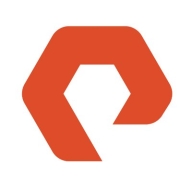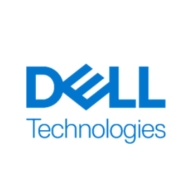


NetApp EF-Series All Flash Arrays and Dell PowerMax compete in the all-flash storage array category. NetApp EF-Series appears more favorable in terms of pricing and support, while Dell PowerMax has the upper hand with its extensive feature set and robust capabilities.
Features: NetApp EF-Series provides high-speed performance, simplicity, and low latency, making it effective for data-intensive environments. Dell PowerMax offers advanced scalability, a wide range of data protection features, and NVMe-based technology, catering to extensive enterprise workloads.
Room for Improvement: NetApp EF-Series could enhance its scalability, integrate more advanced management features, and improve data protection capabilities. Dell PowerMax could improve the complexity of its deployment process, enhance its user interface for better intuitiveness, and optimize licensing cost structures.
Ease of Deployment and Customer Service: NetApp EF-Series is recognized for its straightforward deployment and strong customer support. Dell PowerMax provides a comprehensive deployment process and extensive support options, accommodating the complex needs of varied enterprise clients.
Pricing and ROI: NetApp EF-Series offers more economical initial setup costs, promoting a quicker return on investment. Dell PowerMax, while having a higher initial cost, provides substantial long-term ROI justified by its rich capabilities and efficiency from advanced data services.



Pure Storage FlashArray//X is the world’s first enterprise-class, all-NVMe flash storage array. It represents a new class of storage – shared accelerated storage, which is a term coined by Gartner – that delivers major breakthroughs in performance, simplicity, and consolidation.
Dell PowerMax offers robust performance, reliability, and efficient data handling. It is recognized for its compression, deduplication, and NVMe technology, significantly benefiting data centers with its advanced replication and uptime.
PowerMax is equipped to handle mission-critical applications, providing impressive performance metrics with low latency and high IOPS capacity. Its CloudIQ and Unisphere interfaces enhance manageability, while REST API support simplifies storage management. Users in sectors like healthcare, finance, and telecommunications leverage its capabilities for database management, high-transaction block storage, and disaster recovery. However, opportunities for improving deduplication efficiency, interface complexity, and automation remain.
What are the key features of Dell PowerMax?Industries utilize Dell PowerMax to support diverse environments like VMware, Oracle, and PostgreSQL. It serves multiple sectors such as healthcare, finance, and government, aiding in data storage consolidation, disaster recovery, and high-availability hosting for critical systems and applications.
The NetApp EF560 all-flash array is an all-SSD storage system for applications that demand extremely high levels of performance and reliability. Requiring just 2U of rack space, the EF560 all-flash array combines extreme IOPS, microsecond response times, and up to 12GBps of bandwidth with leading, enterprise-proven availability features.
We monitor all All-Flash Storage reviews to prevent fraudulent reviews and keep review quality high. We do not post reviews by company employees or direct competitors. We validate each review for authenticity via cross-reference with LinkedIn, and personal follow-up with the reviewer when necessary.